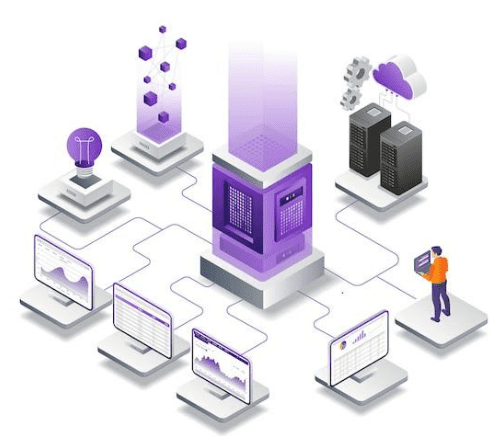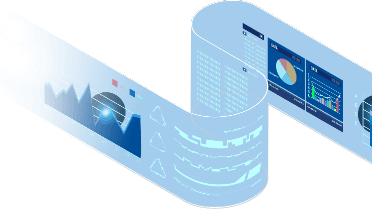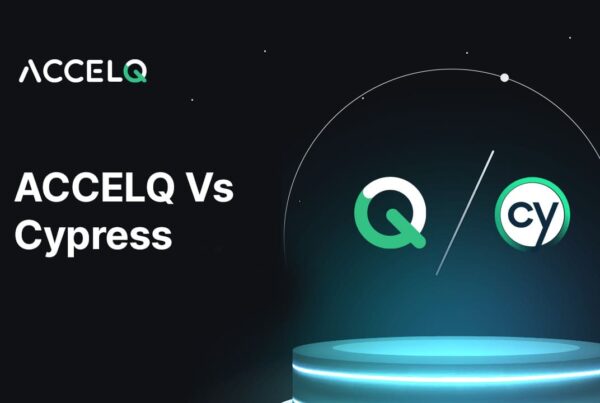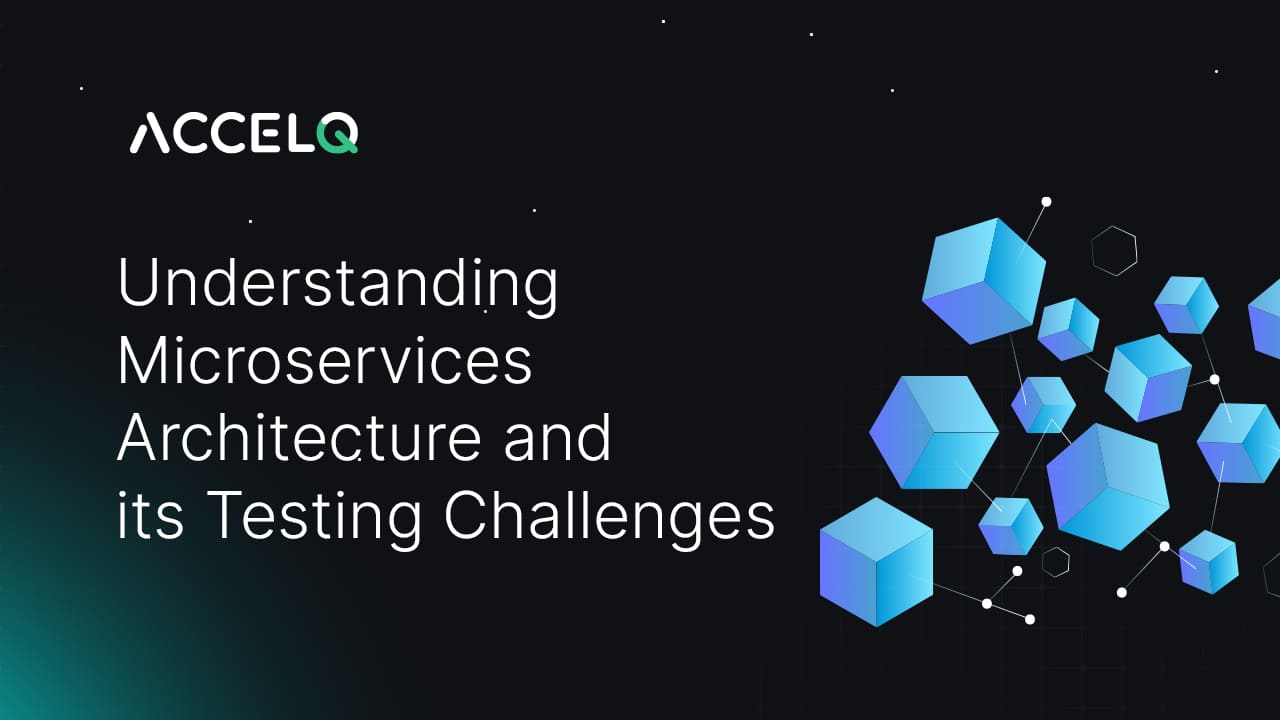Understanding Microservices Architecture and its Testing Challenges

In 2021, a survey by Statista revealed that 85% of respondents from large organizations were already using microservices. More recent research outlines that the microservices architecture market will grow at a healthy CAGR of 19.6% to reach a value of $10.86 billion by 2027, up from $4.44 billion in 2022. This surge in microservices adoption is understandable since it ushers in an innovative approach to software design that enhances scalability and agility.
However, it's noteworthy that microservices' architectural complexity does introduce unique testing challenges. Understanding microservices and addressing their testing intricacies is essential to ensure the seamless integration and functionality of these modular components within complex software systems. So, we'll walk you through the following in this blog:
What Is a Microservices Architecture?

A microservices architecture follows a software design approach where an application is composed of small, independent services. In essence, each service addresses a specific business capability and communicates with other services via well-defined APIs.
That said, microservices architecture offers numerous advantages over traditional monolithic architectures, including:
- Resilience: If one service fails, the others can continue to operate.
- Scalability: Microservices can scale independently. This proves immensely helpful in adding new features or handling increased traffic.
- Maintainability: Each service is small and self-contained, making it easier to develop, test, and deploy.
- Agility: Microservices can be updated or deployed independently, which makes it easier to respond to changes in business requirements.
In a JetBrains survey of microservices developers, about 88% affirmed that they use microservices as an approach for system design. "Service-oriented architecture" was a distant second at 35% while "Monolith with web frontend" stood at 25%." Indeed, the prominence of the microservices architecture is second to none. However, there are some challenges in testing the architecture that need due consideration.
Your business guide to codeless test automation
Ready to execute continuous test automation without writing a single code?

What Challenges Does Microservices Testing Present?
At its core, the microservices architecture structures an application as a group of loosely coupled services. As mentioned above, each service is self-contained and performs a specific task. However, it also presents some challenges for testing.
Complications Due to the Distributed Nature of Microservices
In a microservices architecture, each service is a separate process. This means that tests for different services must run independently. This can be a challenge, as it can prove difficult to coordinate the testing of multiple services. The interactions between services can also become complex, making it difficult to fully test each functionality. This can, in turn, hinder the speed and reliability of a microservices application.
End-to-End Testing Can Prove Costly
End-to-end testing is the process of testing all application components. This can prove difficult and costly in a microservices architecture, as it requires testing all interactions between the different services. Additionally, end-to-end tests can be slow, as they must wait for the results of the tests for each service.
Manual Testing Isn't Feasible
Manual testing is not feasible in a microservices architecture, as there are too many services to test manually. Moreover, manual testing is complex in a distributed architecture, as test results can be delayed due to the lack of synchrony between services. The number of interacting services can also make maintaining test scripts written for a single service difficult.
Coordination is Difficult
Coordinating the testing of different microservice applications is difficult, as each team must coordinate any changes made to their code. When two teams are making changes to different features, there is no way to ensure that the other team has completed their changes before they deploy them. This can lead to rework and delays in deploying new features.
Also, these challenges can make coordination difficult, as the teams need to work together to ensure their services are compatible. Besides, the teams may have different priorities, making it a complex affair to agree on the scope of testing.
Testing Strategies for Microservices

Indeed, testing microservices applications can prove to be a complicated endeavor. However, several testing strategies can come forth as viable options to alleviate the said challenges. Here's a rundown of the same:
Unit Testing
In unit testing, individual components or modules of a microservices-based application are tested in isolation. As such, unit testing can capably ensure that every service works correctly and its associated code fulfills the necessary functionality and the defined quality criteria. That said, developers who create microservices usually write unit tests. These tests can be automated so that they can run quickly and easily.
Integration Testing
This testing examines the interactions between multiple microservices in a system. It proves viable to unearth any complications pertaining to communication faults or data discrepancies that may transpire within microservices. Usually, developers who create microservices write integration tests. However, testers may also chime in. Integration tests, too, are automated to run quickly and seamlessly.
End-to-End Testing
End-to-end testing, as the name suggests, entails the testing of the entire microservices-based application from start to finish, including all microservices components and the associated interactions. But why pursue end-to-end testing when it can prove costly, as discussed above?
Well, for one, testing end-to-end can alleviate problems related to microservices integration, delays in the network, and any external factors that might have a role to play in service disruption. Such holistic impact can then translate into improving the performance of the application.
But the question is — how can these testing strategies work well for microservices, provided the challenges discussed above could cause their failure? This is precisely where the viability of test automation comes to the fore.
The Role of Test Automation in Microservices Testing
Test automation is a vital part of ensuring the quality of microservices-based applications. It makes the testing process more efficient and allows testers to focus on more critical tasks, such as improving the quality of the products delivered by the development team.
Using test automation tools in microservices testing can also help automate many repetitive, time-consuming, and error-prone parts of the testing procedure. For example, an AI-based test automation tool like ACCELQ can help with:
- Test Creation: AI can generate test cases automatically based on the microservices’ code and specifications. This can save a lot of time and effort, as manual test case creation can be very tedious.
- Test Execution: AI can also execute tests automatically without the need for human intervention. This can help to ensure that tests run consistently and no tests are missed.
- Root-Cause Analysis: AI-powered test automation can work well to analyze test results and identify potential problems, such as slow test cases or tests not covering all of the code. It can then inform proactive action to resolve these gaps and errors. A tool like ACCELQ can even bring self-healing to the mix to prevent object flakiness and reduce test maintenance. This can amplify the quality of the microservices application.
Overall, AI-based test automation platforms can prove a valuable asset to streamline and automate microservices testing. They can help save time and effort, improve the quality of the testing process, and address potential problems before they escalate.
Interested in learning more about how test automation can drive the success of microservices testing initiatives? Get in touch with our experts today!
Geosley Andrades
Director, Product Evangelist at ACCELQ.
Geosley is a Test Automation Evangelist and Community builder at ACCELQ. Being passionate about continuous learning, Geosley helps ACCELQ with innovative solutions to transform test automation to be simpler, more reliable, and sustainable for the real world.
Discover More
 ACCELQ Vs Cypress. Why should you make the shift to ACCELQ?
ACCELQ Vs Cypress. Why should you make the shift to ACCELQ?
ACCELQ Vs Cypress. Why should you make the shift to ACCELQ?
 Want a Flawless Website? Follow this Website QA Checklist!
Want a Flawless Website? Follow this Website QA Checklist!
































